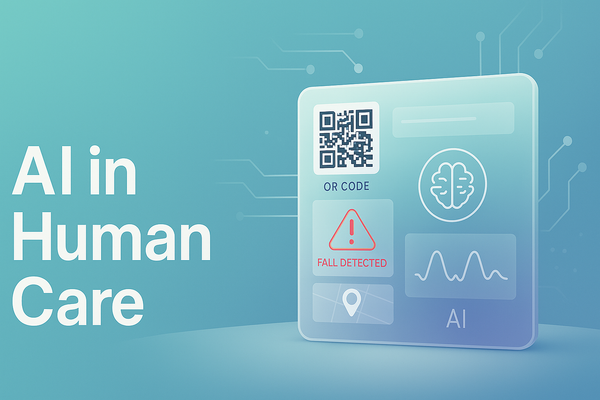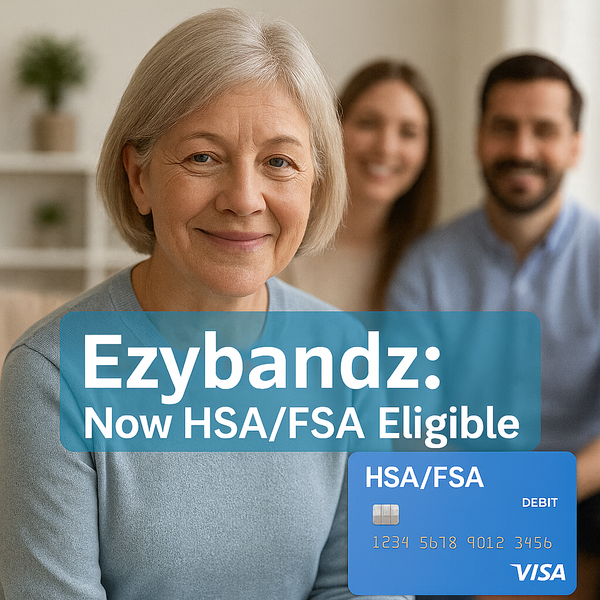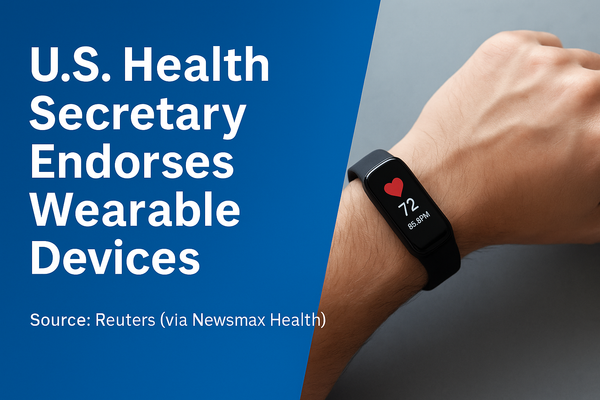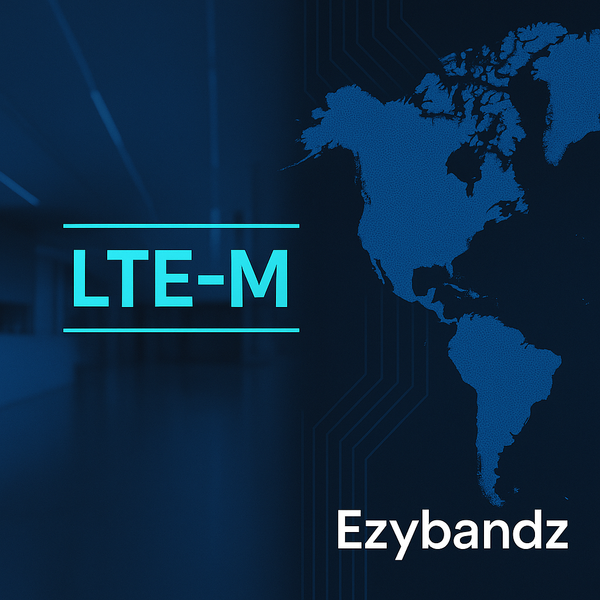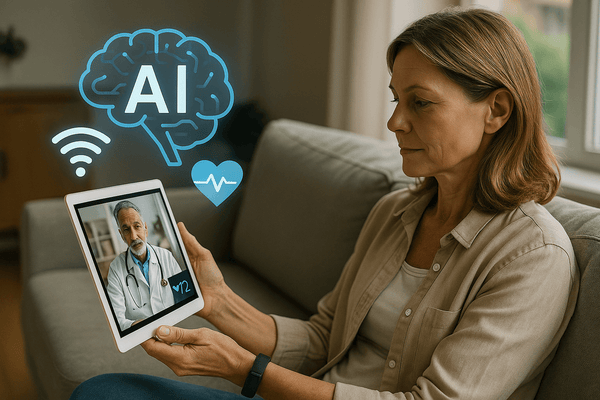“I’ve fallen and I can’t get up.” This famous line from a 1980s safety commercial might sound cliché, but for millions of people – especially seniors or those with medical conditions – it’s a very real scenario. Falls are among the most common and dangerous accidents for older adults and people with mobility issues. They often happen in an instant and without warning. What comes after a fall is what truly determines the outcome: if help arrives quickly, injuries can be treated and recovery can begin; if a person is stranded on the floor for hours, the consequences can be dire or even fatal. That’s why having a medical alert bracelet with fall detection isn’t just a good idea – it can be a life-saving game changer. In this article, we’ll explore how automatic fall detection works, why it’s essential (even if you’re healthy and active), and the compelling evidence and stories behind its ability to save lives. By the end, you’ll understand that a fall-detecting medical alert bracelet, like the Ezybandz GuardianOne, is an invaluable guardian angel for anyone at risk of falling – offering 24/7 protection and peace of mind for both wearers and their loved ones.
The Shocking Facts About Falls: Let’s start with some eye-opening facts:
-
Falls are the leading cause of injury for older adults. Every year, 1 in 4 adults aged 65+ takes a fall cdc.gov.
-
In the U.S. alone, over 3 million seniors are treated in emergency departments annually for fall injuries like head trauma or hip fractures cdc.gov.
-
More than 800,000 patients a year are hospitalized because of a fall injury, most often due to a head injury or hip fracture cdc.gov.
-
Worse, falls are the leading cause of accidental death in seniors. In 2023, over 41,000 older Americans died as a result of a fall injuryfacts.nsc.org.
But here’s an often overlooked statistic: many of the serious outcomes from falls aren’t just from the fall itself, but from the long time spent on the floor afterward, unable to get help. This is known as the “long lie.” Studies have found that around half of seniors who fall cannot get up on their own without assistance physio-pedia.com. If they live or are alone, they can be stuck for hours. Lying on the floor for a long time leads to complications: dehydration, hypothermia (especially if the floor is cold), pressure sores, muscle breakdown (rhabdomyolysis), and even kidney failure. One study reported that among adults over 65 who experienced a “long lie” after a fall (over an hour on the ground), 50% died within six months of that fall physio-pedia.com even if they weren’t injured by the fall itself. That’s a startling mortality rate, often due to the resulting health decline from that period of immobility and the trauma of the experience.
What does this tell us? It’s not just the fall; it’s the time until help arrives. This is exactly where fall detection technology steps in to potentially cut that time to nearly zero. If a device can automatically sense a fall and call for help, it can eliminate the hours of waiting.
How Fall Detection Works: A medical alert bracelet with fall detection contains special sensors (accelerometers and gyroscopes) that measure movement, speed, and orientation. They are calibrated to detect the distinct pattern of a human fall: typically a sudden acceleration (as you start to fall), followed by impact, and then no movement (if you’re knocked out or still). Advanced algorithms separate a real fall from false alarms (like dropping the device or plopping into a chair). For example, Ezybandz’s GuardianOne uses multi-axis sensors and proprietary software to recognize falls with high accuracy ezybandz.comezybandz.com. If a fall is detected, the device will automatically trigger an emergency alert. Depending on the system, it may:
- It may emit a gentle vibration or audible tone to check if you're responsive.
-
If not canceled within 30–60 seconds, the alert is escalated—either contacting a monitoring center or automatically reaching emergency services.
The beauty is no action is required by the fallen person. If you’re unconscious or disoriented, the device acts on its own. If you’re conscious and it was a minor fall, you usually have a brief window to cancel the alarm (to avoid unnecessary dispatch).
Why You Need It (Even If You Think You Don’t): You might be thinking, “I’m careful, I haven’t fallen yet, do I really need that?” Here’s why fall detection is a must-have:
-
Falls can happen to anyone. While seniors and those with certain conditions are at higher risk, healthy people can trip over a rug, slip on wet floors, or get dizzy from a new medication. It just takes one unexpected misstep.
-
Silent medical events: A fall detection device can also catch scenarios where you collapse from a medical issue (heart attack, stroke, fainting) – which to the sensor looks similar to a fall (a sudden drop). If you faint or stroke out, you can’t push a button consciously. Fall detection might be the only thing summoning help. Time is crucial in events like stroke (where treatment within the golden hour can prevent long-term disability). Getting EMS quickly could literally make the difference between a minor scare and permanent damage childfindofamerica.orgchildfindofamerica.org.
-
You might not have your phone. Many people think carrying a phone is enough. But falls often occur when moving around the house (many happen in bathrooms and kitchens) where one doesn’t carry a phone. Or the phone flies out of reach during a fall. A wrist-worn device is attached to you; it goes where you go.
-
Confidence to live independently: Knowing you have this safety net can encourage people to stay active and independent longer. Family members worry less too. A 2017 study noted that users of medical alert systems felt more confident and were more active around the home healthline.com – because they weren’t constantly fearful of “what if I fall and no one knows.” That confidence can improve quality of life.
-
It’s not just for the very old. Fall detection is also great for individuals with Parkinson’s (prone to freezes and falls), epilepsy (in case of a seizure causing a fall), diabetics (low blood sugar fainting), rehabilitation patients, even workers in high-risk jobs or outdoor enthusiasts. Consider a construction worker alone on a site or a hiker a fall alert can be a lifesaver there too.
Real Stories: The impact of fall detection is best illustrated by real stories. Here’s a scenario:
-
Margaret, 82, lives alone. One morning, while getting out of the shower, she slipped on a wet tile. She fell hard, hitting her hip – later found to be fractured. She also knocked her head, dazing her. Luckily, Margaret was wearing her fall-detect medical alert bracelet (yes, it’s waterproof for just this reason). The device sensed the fall’s impact and lack of movement afterward. Within seconds, it sent an alert. A dispatcher from the monitoring service tried to speak to Margaret through the device – getting no response as she was semi-conscious. They immediately dispatched an ambulance and notified her daughter. Paramedics arrived within 10 minutes and found Margaret on the bathroom floor. They provided care and got her to the hospital quickly, where she underwent surgery for a broken hip. Margaret survived and recovered. Her doctors said that if she had lain there for hours, she could have gone into shock or developed complications. Margaret later said: “If I hadn’t had that bracelet, I honestly don’t know if I’d be here. I couldn’t move, I couldn’t reach a phone. It did everything for me.”
-
John, 70, a diabetic veteran, had a fall-detection watch as part of his medical alert. One day his blood sugar dropped unexpectedly and he fainted in his living room. The system detected the “fall” (really a collapse) and called for help. John came-to as EMTs arrived. He hadn’t even realized what happened. Without the device, he might have remained unconscious too long, which can cause brain damage in severe hypoglycemia. The device potentially saved him from a coma. It also signaled a need to adjust his insulin regimen – insight that might have come too late if the outcome were worse.
-
Lone worker example: A utility worker fell off a ladder in a remote area, breaking his leg and losing his phone in the process. His fall-detection device alerted his company’s emergency line and they sent help to his GPS location. This shows fall tech isn’t just for seniors – anyone in a situation where an unnoticed fall could be catastrophic should consider it.
Why Not Just Rely on Manual Buttons? Traditional medical alert pendants required the user to press a help button. Those are still very useful – if you’re conscious and can press it. But studies show that in as many as 30-40% of serious falls, the person is either unconscious or too injured/confused to press a button. Even if they can, sometimes panic sets in or they don’t think clearly (“maybe I’m okay, I’ll just try to crawl to the phone…”) which wastes precious time. Automatic fall detection covers those cases. It’s like a safety net under the safety net.
Addressing False Alarm Worries: Some people worry, “What if it mistakenly thinks I fell when I didn’t? I don’t want ambulances showing up for no reason.” It’s true early fall detectors a decade ago had more false alarms. Technology has improved greatly. Modern devices have false alarm rates typically <5%. Plus, features like phone call verification help: if a fall alert triggers, the monitoring center may call you via the device or your phone to confirm. If you say “oops, no, I’m fine,” they won’t send EMTs. If you don’t answer or say you need help, they act. So the system has checks. It’s a small inconvenience compared to the benefit. As one user quipped, “I’d rather have a false alarm than a false sense of security.” The occasional false alert is a minor trade-off for knowing a real fall will definitely trigger aid.
Pairing Fall Detection with GPS: We’ve touched on this but it’s worth emphasizing: a fall alert is even more powerful when combined with GPS location tracking. If you fall and can’t speak, how will responders know where you are? With GPS, the alert includes coordinates. Ezybandz’s device, for instance, would transmit your exact location to the monitoring service or to your emergency contacts’ app health.harvard.edu. If you’re out for a walk or even in a large home, that’s crucial. It can be literally a pinpoint “found you!” feature, shaving minutes off response times.
The Cost of Not Having It: Sometimes people resist getting a medical alert with fall detection due to cost or denial (“I’m not that old/frail”). But consider the costs of a long-lie fall: extended hospital stays, surgery, maybe life in a nursing home afterward, not to mention pain and loss of independence. In terms of prevention, a medical alert system is a small investment. Also, think of the emotional cost to family if a loved one falls and isn’t found for hours – it’s traumatic. Many adult children convince their aging parents to wear fall-detect devices for their own peace of mind as much as the parent’s safety. And indeed, about 39% of adult children of seniors said they’re likely to buy a medical alert for their parent within a year theseniorlist.com. Families recognize its importance.
Who Should Wear a Fall-Detect Bracelet? In summary:
-
Seniors aged 65+ (especially if they live alone or spend parts of the day alone).
-
Anyone with a history of falls or balance issues.
-
Those with medical conditions that could cause falls (stroke survivors, Parkinson’s, epilepsy, diabetes, low blood pressure issues, etc.).
-
People on medications that cause dizziness.
-
Individuals recovering from surgery (knee/hip replacements, etc.) – temporary use can help during rehab when falls are more likely.
-
Even active seniors who hike or garden – because a fall can happen out of sight of help.
-
Lone workers in hazardous jobs or outdoor adventurers (some devices have modes for this as well).
Conclusion: A medical alert bracelet with fall detection is like having an ever-vigilant guardian by your side, one that never sleeps or gets distracted. You hope to never need it, but if you do, it acts immediately potentially saving your life or at least saving you from long, painful hours waiting in fear. It provides freedom: freedom to live alone or go about your daily activities without the constant worry “what if I fall?” Because you’ll know that if you do, you won’t be alone for long. Help will be on its way, summoned even if you can’t utter a word.
In the grand scheme, it’s a simple piece of technology with a profound impact. It turns the scenario of “I’ve fallen and I can’t get up” into “I fell, but thank goodness, help is already coming.” That peace of mind is priceless.
So, if you or a loved one is on the fence about it, consider the statistics and stories above. Consider your own health or environment. And strongly consider making that investment in a fall-detect equipped medical alert bracelet. It’s a small wearable, but it carries a mighty promise: to be there for you in your moment of greatest need.
Stay safe, and remember – taking smart precautions is not a sign of weakness or pessimism, but of wisdom and empowerment. A medical alert with fall detection is ultimately a tool that supports you in living boldly and independently, with the reassurance that if something goes wrong, technology and emergency responders have your back.
Research References: Falls are extremely common and dangerous for seniors: over 25% of older adults fall each year cdc.gov, and falls are the #1 cause of injury deaths in that age group injuryfacts.nsc.org. Getting help fast is critical – half of seniors who lie on the floor over an hour after a fall die within 6 months physio-pedia.com. Medical alert systems with automatic fall detection can drastically cut emergency response times by summoning help when the user cannot physio-pedia.com. The CDC and senior health organizations recommend fall alert devices for those at risk cdc.gov. Modern fall detection wearables use accelerometer algorithms to detect falls and have low false-alarm rates nsc.orgnsc.org. Studies show that having a medical alert increases seniors’ confidence to live independently healthline.com. Given that only ~10% of seniors currently use such systems theseniorlist.com but 1 in 3 have serious falls theseniorlist.com, there’s a big gap in safety that fall-detect devices like Ezybandz GuardianOne can fill. Don’t wait for a fall to happen – prepare now with the protection of automatic fall detection.



